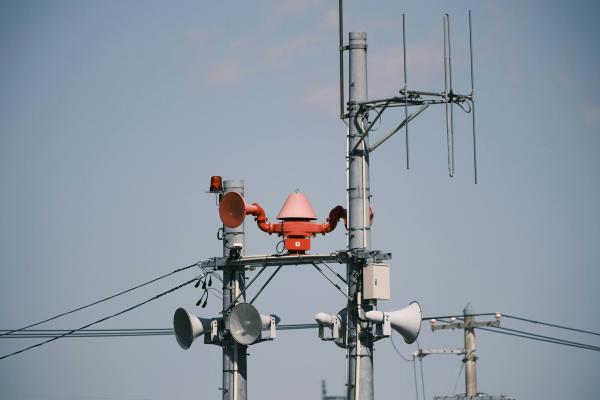By Laura Michelon, Resilience First
Flooding is a natural disaster – exacerbated by climate change – that can have devastating effects on communities and businesses. With the frequency and severity of floods increasing in recent years, it is more important than ever for organisations to prioritise flood resilience.
We sat down with Property Flood Resilience Champion, Mary Long-Dhonau OBE, to discuss why Property Flood Resilience is crucial for businesses, what steps they can take to become more flood resilient, and the potential impacts of flooding on their property, infrastructure, and staff.
LM: What is meant by Property Flood Resilience?
MLD: Property Flood Resilience (PFR) is adapting a property to enable it to recover quickly after a flood. Some examples of this include: fitting measures, such as a flood door or barriers, self-closing airbricks, non-return valves and pumps and/or having solid floors, water recoverable plaster and kitchens, so that once the flood water has left the property it can be cleaned, dried, and lived in again far sooner than a property that does not have PFR.
LM: Why does Property Flood Resilience matter to organisations and communities?
MLD: Floods can bring a community to its knees, with many homes, and perhaps the GP surgery, shops and other community services all flooded. The average flood takes around 9 months to recover from; homes and businesses that have installed PFR can recover in days.
LM: What potential impacts of flooding should organisations consider on their property, infrastructure and staff?
MLD: The impacts can be huge. With the property unable to be used for months on end, businesses may well have lost stock and be unable to open. Often, these businesses provide valuable employment within the community and the heart of the town may stop beating until shops and businesses have been dried out, repaired, and can open again. Roads and railways can be flooded and impassable. Staff may also be flooded and suffering emotionally. Being flooded is a hugely traumatic experience, but the recovery from the flood is so much worse.
LM: What action can businesses take to be flood resilient?
MLD: Firstly, be aware of your flood risk and sign up to free Environment Agency Flood Warnings. Have a business focused emergency plan, that all staff are well versed in. Know where to move stock to when a flood warning comes. Have flood products ready to fit and make sure they are well maintained, and pumps are primed and ready to go. Remember, safety is paramount.
LM: How will investing in sustainability and resilience help resolve flooding issues connected to climate change and extreme weather events?
MLD: If we all took small moves to make a change, such as fitting a water butt and emptying it when we know heavy rain is coming, the amount of rain that went into the water butts and not the drains could make a big difference to local flooding issues. We could all stop paving over our drives and fit permeable paving or grow a lawn again and fit a ‘honeycomb’ like hardened structure, that grass can grow through, but we can still park on.
LM: Have you seen any examples of successful systems being used for flood warning in cities?
MLD: The Environment Agency has free flood warnings for areas of river flooding. A new app has recently launched that will give both river and surface water flood alerts.
LM: Can you give any successful examples of implementing Property Flood Resilience initiatives?
MLD: Yes, lots in my free to download eBook.
LM: Are you seeing any improvement in the UK? What’s the outlook for 2024?
MLD: I’m worried about the lack of preparedness within the UK. I was very involved in giving advice during Storms Babet and Ciarán and I think we have the mentality that ‘it won’t happen to me, or I’ve not flooded in years, so I’m safe’. I’ve known houses on hills flooded from overland runoff and more people are at risk of surface water flooding (basically, that’s flooding from too much rain and the drainage system being overwhelmed). In my book, anyone could flood, so we should all be prepared. For more information visit my website: FloodMary.com
Thank you to Mary for giving her expert advice. By understanding the importance of flood resilience and taking necessary steps, businesses can stay afloat, both physically and financially, and protect their operations and livelihoods in the face of flood events. We hope you have found this article useful and it will help you to ensure your organisation is more Property Flood Resilient in the future.



